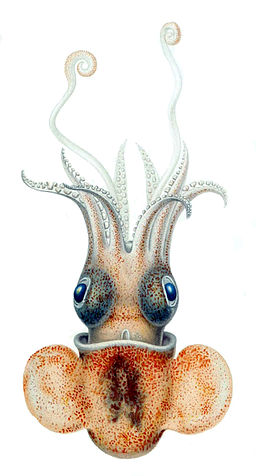Mastigophora
Definition, Classification and Characteristics
Definition: What is Mastigophora?
Classified under the kingdom Protozoa, Mastigophora is one of the groups whose classification has proved controversial over the years. For instance, while it has been ranked as a subphylum under the phylum Sarcomastigophora in some books, it's described as a Superclass under the subphylum Sarcomastigophora in others.
Regardless, members of the group are characterized by the presence of one of several flagella used for movement and are therefore also referred to as flagellates. They can be found in terrestrial and aquatic environments where they may exist as free-living organisms or as parasites.
Some examples of species that belong to this group include:
- Trypanosoma
- Trichonomas
- Mastigamoeba
- Leishmania
- Giardia
Classification of Mastigophora
· Kingdom: Protozoa - Single-celled eukaryotes that exist as free-living organisms or as parasites
· Phylum: Sarcomastigophora - Single-celled eukaryotes that may exist as single cells or in colonies. They move by means of flagella or pseudopodia (or both in some species)
· Subphylum: Mastigophora
Mastigophora is further divided into two classes that include:
Phytomastigophora
Members of class Phytomastigophora are commonly found in aquatic environments (particularly in oceans) and are characterized by the presence of transverse and longitudinal flagella that allow them to swim in water (in a rotating manner).
Based on microscopic studies, these organisms have also been shown to contain chloroplasts in their cytoplasm. However, such organisms as Amyloodinium species have been shown to be parasitic and capable of causing dermatitis to their hosts.
In aquatic environments (ocean), these parasites attach to the host (marine fish, etc) using rhizoids. Heavy infestations have been shown to result in hyperplasia of gill filaments in these fish as well as hemorrhage and necrosis.
Using chlorophyll located in their chloroplasts, these organisms are able to synthesize organic compounds. However, due to their location (in aquatic environments), these organisms have to rely on dead organic matter in their surroundings when sunlight is not available. For this reason, they are regarded as both autotrophic and heterotrophic.
Zoomastigophora
Also referred to as zooflagellates, Zoomastigophora are characterized by the presence of a whip-like flagella (one or more flagella) that they use for locomotion.
Unlike members of the class phytomastigophora, these organisms do not contain chloroplast in their cytoplasm. However, some of the species (e.g. Cytobia sp.) are parasitic in nature and capable of causing gastric dilation if they invade the gastric epithelium. Some of the other diseases caused by members of this class include sleeping sickness (caused by T. brucei) and giardiasis (caused by Giardia lamblia).
General Characteristics of Mastigophora
As already mentioned, members of Mastigophora are characterized by the presence of flagella that are used for locomotion for most of their life cycle.
Depending on the species, some of the organisms have a single flagellum while others have more. For all species, however, these structures (flagella) originate from a small basal body known as a centriole. For the species with multiple flagella, these may either be of equal length (referred to as isokont) or varying length (known as heterokont).
For the most part, the majority of species are free-living (synthesizing their own food for feeding or organic matter in their environment). However, there are several parasitic species, most of which make up the families dinoflagellates (characterized by a haploid nucleus) and kinetoplastids.
Currently, over 4,000 species of Mastigophora have been identified. With regards to size, some of the species like Noctiluca are significantly large; growing up to 1500 um in length (1.5 mm) while others like monads only grow to about 3um in length. General morphology, on the other hand, varies from spherical to cylindrical depending on the organism.
Some of the other important characteristics of Mastigophora include:
- Majority of dinospores are covered by an outer armor that consists of cellulosic plates
- Some of the species contain colored pigments in place of chlorophyll (some of these pigments are neurotoxic)
- Kinetoplastids contain extranuclear DNA (kinetoplast)
Reproduction and life cycle
Modes of reproduction in Mastigophora vary depending on the organism. For instance, whereas most of the species largely rely on longitudinal binary fission, others have a more complex life cycle that switches between sexual and asexual modes of reproduction.
For such parasites as Trichomonas vaginalis, which is responsible for trichomoniasis, reproduction is through binary fission (longitudinal binary fission), a type of asexual reproduction. Here, genetic contents of the cell divide followed by the cell splitting into two along the longitudinal plane to form two equal daughter cells.
While asexual reproduction through binary fission is the primary means of multiplication for these organisms, new studies have shown that for organisms like Leishmania that have a complex life cycle (requiring two hosts) sexual reproduction also takes place.
According to results from these studies, offspring were found to contain genes from two parents. This was evidence that adult forms of these parasites are capable of mating to produce new offspring.
Return to Parasites under the Microscope
Return to Parasitology main page
Return from Mastigophora to MicroscopeMaster home
References
Anderson O.R. (1988) The Flagellates (Phylum: Sarcomastigophora; Subphylum: Mastigophora). In: Comparative Protozoology. Springer, Berlin, Heidelberg
Jens Matthiessen and Michael Schreck. (2015). Dinoflagellates.
Klaus Rohde. (2005). Marine Parasitology.
Watchariya Purivirojkul. (2012). Histological Change of Aquatic Animals by
Parasitic Infection.
Links
https://www.accessscience.com/content/mastigophora/409200
https://www.itis.gov/servlet/SingleRpt/SingleRpt?search_topic=TSN&search_value=43782#null
Find out how to advertise on MicroscopeMaster!





